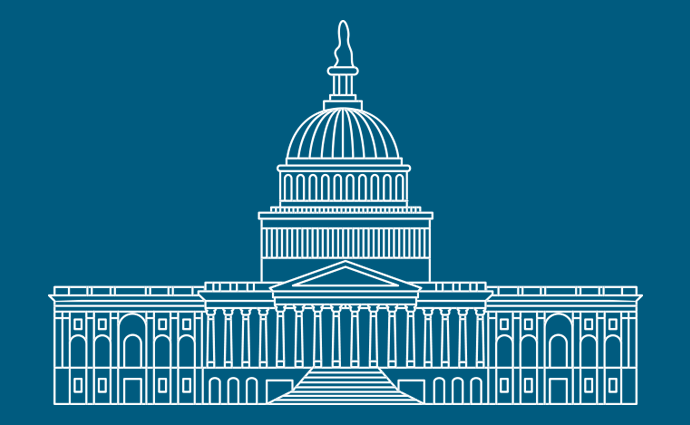AHIP: Congress Must Stabilize Payer Market, Consider Reforms
AHIP has submitted to Congress AHCA recommendations in four policy areas to stabilize the health insurance exchange for payers.

Source: Thinkstock
- With passage of the AHCA, the insurance industry group AHIP has sent its response to congress and presented its recommendations for what direction to go in with healthcare reform
The payer industry organization submitted recommendations in four policy areas: Short-Term Individual Market Stability, Transition Period, Medicaid Beneficiary Needs, Funding and Flexibility, and Long-Term Market Priorities.
“This letter is in response to your request for comments and recommendations on issues surrounding the health reform legislation, “stated AHIP CEO Marilynn Tavenner.
With a June 21 deadline for payers to file rates for the 2018 exchange, the most important AHIP recommendation to stabilize the market for the short term (and long), is for Congress to guarantee funding for Cost Sharing Reductions (CSRs) through 2019.
“If health plans lack certainty about continued CSR funding, the only operational alternative is to incorporate CSR costs into premiums, which translates into an estimated 15-20 percent premium increase,” AHIP wrote.
READ MORE: AHCA CBO Score Predicts 23M Uninsured, Higher Out-of-Pocket Costs
Other key short-term stabilization initiatives recommended were: a reinsurance approach and other market stabilization programs to reduce premiums while giving states more flexibility, a push to enroll younger Individuals (18-34) by using age-adjusted credits, and the continued suspension of the ACA health insurer fee.
AHIP also supports other AHCA stabilization initiatives that could possibly go into effect. These include creating a significant Patient and State Stability Fund, eliminating ACA taxes, enhancing tax credits for younger consumers, and recognizing the importance of continuous coverage.
Include Continuous Coverage Provisions if the individual mandate is eliminated.
If, or when, reform comes to federal healthcare regulations, AHIP reiterated the need for the transition period to contain an adequate adjustment time for stakeholders.
For payers, a transition period is vital, with time to create new products, gain approval from state regulators, and market plans to potential members. This also applies to Medicaid plans.
READ MORE: Healthcare Orgs React to House Vote on American Health Care Act
A third plank of AHIP’s response to the Senate inquiry for recommendations included a focus on Medicaid, specifically the funding needs of beneficiaries and flexibility for states.
AHIP urged Congress to maintain low or no copayments for preventive benefits, behavioral health services, and acute care.
With over 50 million people receiving benefits through payer-administered Medicaid plans, the issue is critical to the industry.
AHIP expressed concern over several proposed funding changes in the AHCA “such as the base year selection, annual increases tied to the consumer price index for medical care, and applying per capita caps to certain populations.”
The state use of Medicaid waivers, which is already gaining in popularity, is a key component of any Medicaid reform. as is Medicaid’s “vital role in supporting rural hospitals and health care providers.”
READ MORE: House Passes AHCA To Repeal and Replace ACA By 1 Vote Margin
Perhaps the most important, and murky prognosis, comes with the long-term health insurance market. To assure affordable coverage options after 2020, with the AHCA proposing to restructure the individual market, AHIP recommends the following key principles:
Coverage for all, including those with preexisting conditions. This means no denial or pricing out of coverage. This entails providing full coverage with adequate tax credits that makes coverage affordable, and strong incentives to maintain continuous coverage.
Affordable coverage through well-designed tax credits: Provide adequate tax credits especially for those who have lower incomes, are older, and live in areas with high healthcare costs. By utilizing the existing flat tax credit structure, AHIP calls for providing extra assistance to lower-income individuals, appropriate age and geographic adjustments.
Risk pools. Use permanent federal funding for state-based risk pool programs, such as reinsurance. Actuaries and policy experts estimate a permanent reinsurance program for high-cost patients—would substantially reduce premiums by 10 percent to 14 percent.
Continuous coverage: Keep a large and diverse participation pool, with incentives for healthy individuals to get and maintain insurance coverage continuously. This would be particularly vital if the individual mandates were eliminated. This would require enforcing stricter rules for late enrollment penalties or waiting periods.
State innovation and flexibility: AHIP agrees with many state insurance commissioners that states need more flexibility to create affordable individual market plans. This involves flexibility around coverage requirements, benefit benchmarks, innovation waivers, risk pools, and plans that promote innovations in care delivery, such as value-based insurance.
Expand health savings accounts (HSAs). This includes regulations to make HSAs easier to administer and more broadly available.
Reduce cost of care: “Rising health care costs have been a financial burden for too many families for too long,” AHIP said. “From out of control drug prices to bureaucratic regulations to outdated payment models.” This would require improvements to market competition, better care coordination, using evidence-based medicine, and prioritizing value.
Maintain Employer-Sponsored Coverage: The employer sponsored market is the largest single source of health coverage in the United States with over 150 million beneficiaries. “Consequently, we believe it is important for the Congress to maintain the current tax treatment of employer-sponsored coverage,” stated AHIP.
Maintain regulatory rules around HIPAA excepted benefits: Any legislative action should maintain the current option to obtain HIPAA [Health Insurance Portability and Accountability Act of 1996] excepted benefits, such as vision and dental plans. This builds upon Congress's earlier legislation that has considered the role of such non-comprehensive coverage and carved out such coverage under HIPAA and the ACA as an excepted benefit. Any legislative action should maintain the current treatment of HIPAA excepted benefits as outside the scope of reforms under consideration by the Congress.
